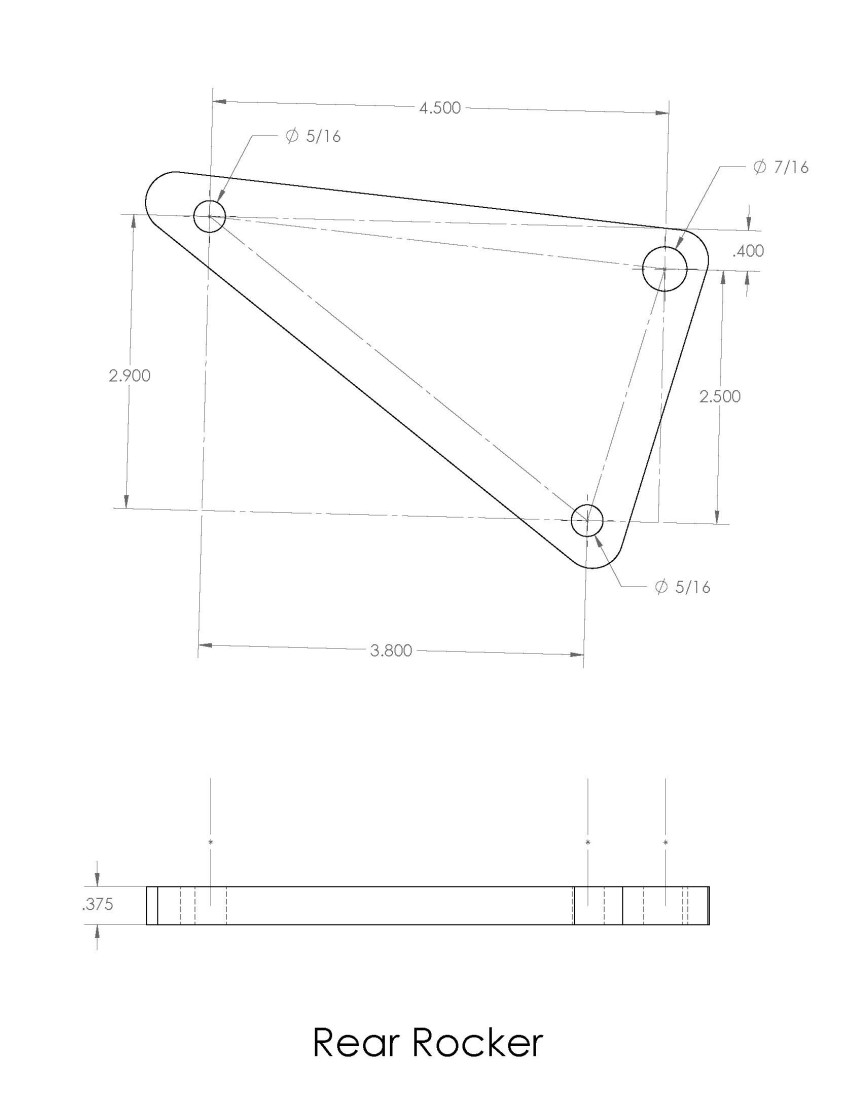Our Suspension Doesn’t Work Too Well
Let’s be honest: our team was hard pressed to reach our goal of a rolling chassis for the Winter Design Review last quarter – so hard pressed, in fact, that we achieved our goal at 2AM on the morning of the design review.
When we finally hammered the last bolt through its stubborn hole, we took our chassis off the jacks and the tires supported the car for the first time ever. While it was a monumental moment for the progress of Savage, we quickly discovered that our rocker geometry contained a large flaw. As we loaded our rear suspension with more force, our shocks compressed further and further, until the line connecting the rockers and the shocks reached 180°. When the angle pushed just over 180°, the rockers turned past the critical point and the shocks exploded back, pushing the rockers into a locked out position in the wrong place.
This is a problem.
At the beginning of this quarter, our suspension team analyzed the real-life geometry of our suspension, instead of the ideal design. What we discovered was that no matter how we tune our shocks, springs or push rods, there will always be a critical point that we can reach which will push our suspension into a locked out, useless mass of metal. We’re going to have to re-analyze our real-life geometry and redesign the rockers with a ratio that fits.
This experience was a violent reminder of how our car, being completely handmade, cannot be manufactured exactly to our ideal design. Tolerances, tolerances, tolerances. Because we don’t have the money or resources to get all of our parts laser cut like other FSAE teams, we have to deal with and find solutions to the very loose tolerances that we can manufacture to.
Our plan of action is to redesign the rockers to fit the real-life geometry of the suspension. Because the real-life measurements are inevitably different from the design, we need to take careful measurements of the real car, and design those instead of the ideal design. We are deciding to change the rockers instead of other components because the rockers, being made on manual mills with digital read-outs, are the parts that can be manufactured with the greatest accuracy and precision.
By Harrison Lu, Racecar Savage

